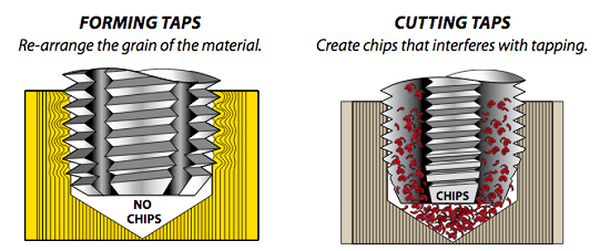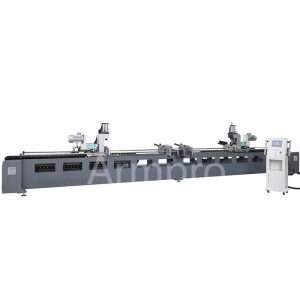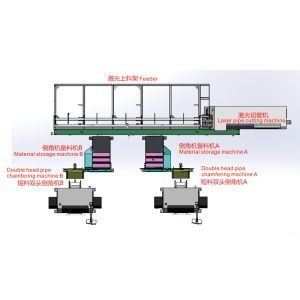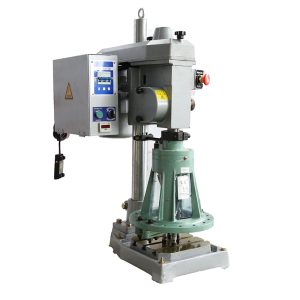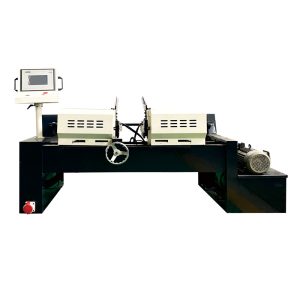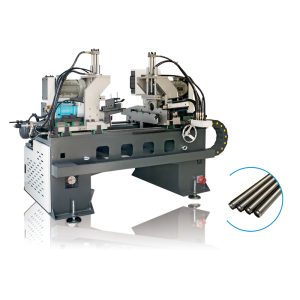Forming Tap vs Cutting Tap: Which One Should You Choose?
Introduction
The decision of whether to use a forming tap or a cutting tap is very crucial in determining the strength, effectiveness, and longevity of the threads produced.
These two are both employed for the same job- making threads inside a hole, but with a difference.
For one to get the best out of manufacturing and machining operations, he should be able to differentiate between the two kinds of taps, know where they are used most effectively, and determine which one is appropriate for his specific requirements.
This post examines the form of taps, their cutting counterparts, what makes them unique, and their pros so that you can make the right choice.
1. What is a Forming Tap?
A forming tap can be described as a specialized tool with which threads are produced in ductile materials without cutting them off and removing any material.
Unlike cutting-type taps, form taps operate by pushing aside some of the workpiece material into the shape of the thread. The latter is commonly known as the cold-forming or thread-rolling process.
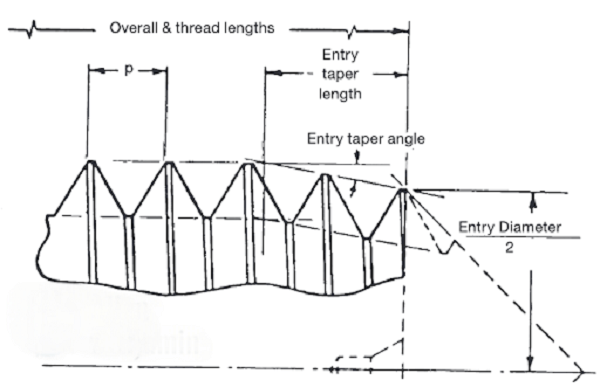
It is designed in such a way that it does not have any flutes or cutting edges; instead, it exerts pressure on the workpiece so that the latter takes up the form of threads.
Forming taps are very appropriate for use on materials that produce long continuous chips, such as aluminum, brass, and other low-strength steels that are difficult to machine.
On top of that, the material that has passed through the forming process in the forming tap is said to have a work-hardening effect, and therefore, it makes the thread forming tap to be more resistant than if it was cut with a cutter.
In simpler terms, a forming tap is a tool that does not cut but changes the shape of the workpiece.
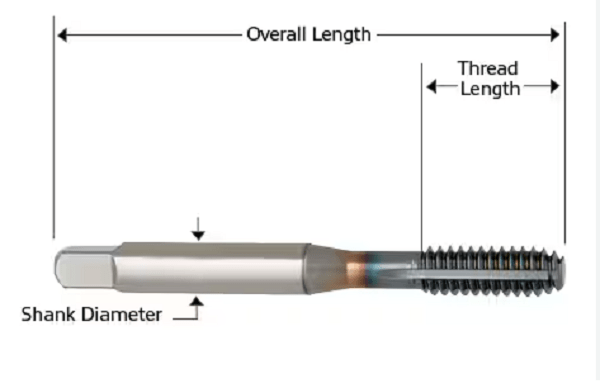
2. Forming Tap Application
Forming taps are widely used in industries where strong, durable threads are required. One of the key considerations when using a forming tap is the tap drill size chart.
Since no material is removed during the thread-forming process, the pilot hole must be precisely sized according to the forming tap chart.
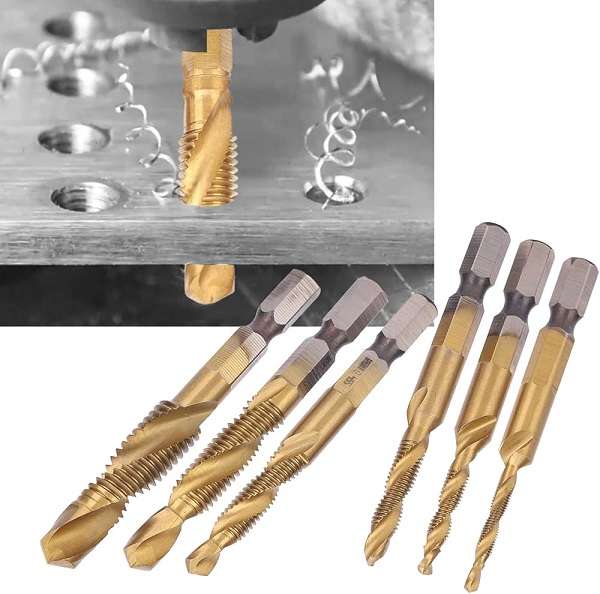
The forming tap drill size is typically more significant than that used for cutting taps to accommodate the material displacement.
These taps are particularly useful in applications involving soft or ductile materials, such as automotive components, aerospace parts, and electronics.
The absence of chips also makes forming taps suitable for blind holes, where chip evacuation can be challenging. By referring to a tap drill size chart specific to forming taps, you can ensure accurate and efficient thread creation.
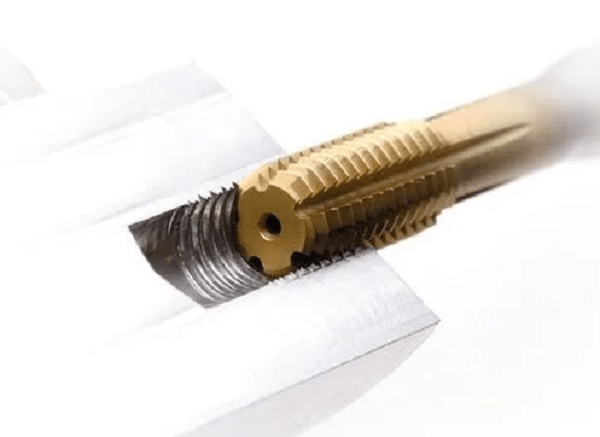
3. What is a Cutting Tap?
The traditional tap for cutting threads inside a hole by removing material is called a cutting tap or cut tap. It is designed with cutting edges and flutes that assist in the elimination of chips as the tapping process is performed.
Cutting taps can cut through a variety of materials, such as tough steel, plastics, and reinforced materials.
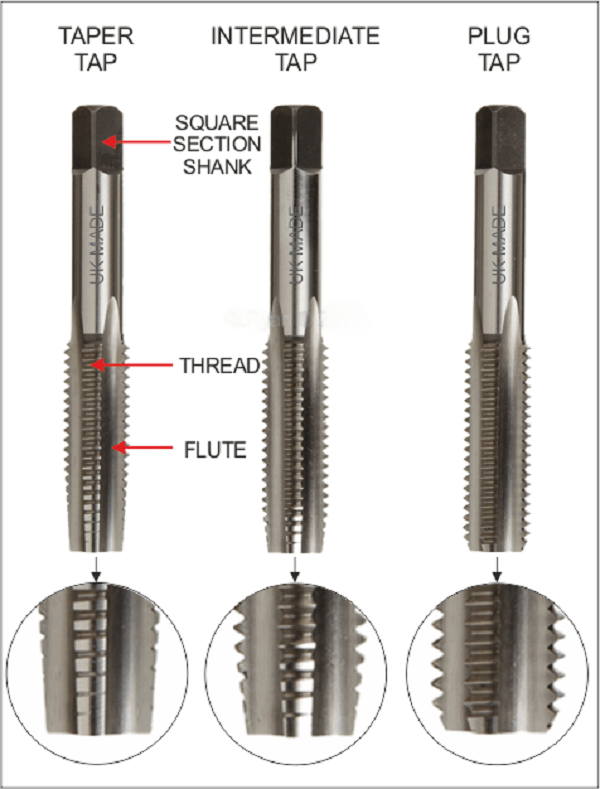
The cutting tap design is meant for cutting accurate threads, but it also creates some problems, like chips, that must be taken care of. This means that cutting taps may not work well in blind holes or with materials that form long, continuous chips.
Nevertheless, a cutting tap remains the most appropriate choice for cutting threads when dealing with harsh and brittle materials that do not allow the use of form taps.
4. Application Of Cutting Tap
Cutting taps find wide applications where there is a need to cut or remove materials. A cutting tap is, for instance, preferred when tapping stainless steel or any other rigid material.
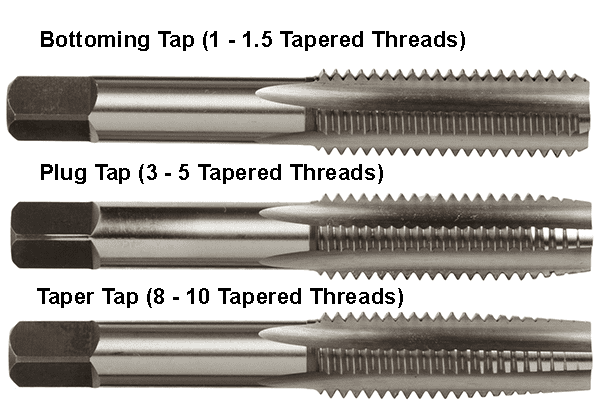
Cutting taps are also employed in the industrial sectors, such as plumbing, to make threads on stainless steel BSP fittings. To determine which tap size should be used for cutting threads with BSP thread, one may refer to the BSP thread chart available for this purpose.
On top of that, cutting taps work best on materials that produce easy-to-handle small chips, e.g., cast iron and some plastics. They are widely used in many manufacturing and machining industries because of their adaptability to different materials.
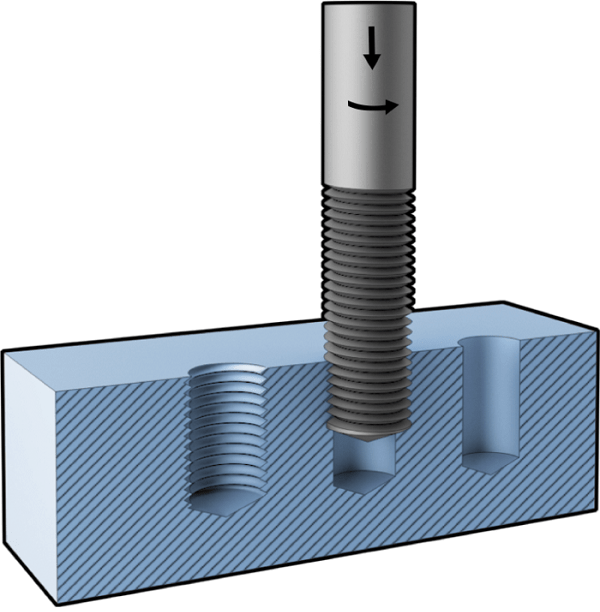
5. How to Choose Forming or Cutting Tap for Your Application?
Choosing between a forming tap and a cutting tap depends on several factors, including the material, thread requirements, and application specifics. When deciding between a thread-forming tap and a cutting tap, consider the following:
- Material:Use a forming tap for ductile materials like aluminum or brass. Opt for a cutting tap for hard or brittle materials like stainless steel or cast iron.
- Thread Strength:Threads created by a forming tap are generally more substantial due to work hardening.
- Chip Management:If chip evacuation is a concern, a forming tap is preferable for blind holes.
- Precision:Refer to a tap drill size chart for forming taps or a BSP thread chart for cutting taps to ensure accuracy.
Considering these factors, it is possible to know the correct type of tap for your case.
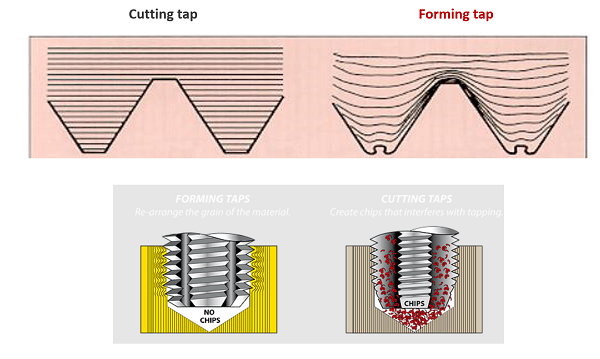
Conclusion
The argument of forming tap vs cutting tap is inconclusive. Each of the implements is applicable under certain conditions and has specific benefits.
Forming taps are very good at producing smooth threads without any chips on malleable materials; on the other hand, cutting taps provide an all-around solution with a high level of accuracy, especially on more rigid materials.
With this in mind, it can be concluded that by being keen on such kind of differences and putting into consideration some variables such as; the nature of workpiece material, required screw strength, etc., one will be able to make a rational choice that will lead to the satisfactory output of their threading projects.
Be it on stainless steel BSP fittings or mild aluminum parts, making an appropriate selection of a tap is very important if you want to succeed.
For detailed guidance and accurate pipe size tables, please visit Armpro Machine. Our range of accessories and expert advice ensures that you will find the perfect solution that meets your needs.
Don't forget to share this post!
Related Products
CONTACT US
Tell us your raw material and working details to get quotations within 24 hours.
WhatsApp Us: +86 159 27 555863

Want the best price & newest metal working machinery buying guide,tips and trends sent straightly to your box?Sign up for Armpro's monthly newsletter,we're free for your consultation and Offer you the most suitable working solutions!
The Buyer's Guide
- Tapping Machine: The Ultimate Buying Guide in 2024
- Electric Tapping Machines:the Ultimate Buying Guide in 2024
- Drilling Machine: The Ultimate Buying Guide in 2024
- Drilling milling Machine:The Ultimate Buying Guide in 2024
- CNC Tapping Machine :The Complete Buying Guide in 2024
- Pipe chafering Machine:The Complete Importing Guide in 2024
- Radial drilling Machine:The Complete Buying Guide in 2024
- Thread rolling Machine:The Complete Buying Guide In 2024
- Pillar Drilling Machine:The Ultimate Buying Guide in 2024
